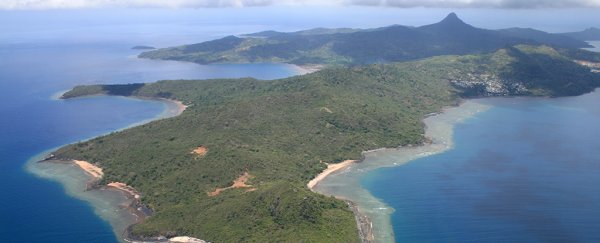Last November, a huge seismic event that shook the planet left experts wondering about its possible source. Researchers now think they know what might have caused it: an offshore volcanic event unlike any other in recorded history.
If the hypothesis is right, and there has been a massive movement of magma underneath the sea floor, that has implications for nearby Mayotte and the neighbouring Comoros islands off the coast of Africa.
Mayotte has already started to sink (by around 9 mm or 0.35 inches per month) and move eastward (by around 16 mm or 0.63 inches per month) – movements that would tally with an underground chamber getting deflated as magma flows out.
"We believe that the 2018 crisis is associated to an eruption, despite the fact that we do not have direct observations so far," write the researchers behind the new study.
"It might be the offshore eruption with the largest volume ever documented."
Based on the seismic readings taken in the area over six months leading up to the November tremor that was spread across the world, the team suggests more than a cubic kilometre (0.24 cubic miles) of magma has been shifted from an eruption point some 28 kilometres (17.4 miles) below the surface.
The thinking is that all this magma may not have reached the seafloor but instead flowed into the surrounding sediments, with volcanic gas remaining trapped inside the magma. That would explain why nothing has been observed yet above the surface.
"The 2018 event at Mayotte does appear to show a substantial volume of magma leaving a deep storage region which, if erupted, would make this indeed one of the largest recent submarine eruptions documented," geologist Samuel Mitchell from the University of Hawaii at Mānoa, who wasn't involved in the study, told Gizmodo.
As the tremors continue, scientists are scrambling to get more instruments and equipment to the area, to get a better idea of what's actually going on. For the time being, the idea of a major volcanic event fits the existing data pretty well.
There are still lots of unanswered questions though: why is the event happening at the eastern end of the Comoros island chain, when the newer volcanic islands in the area are to the west? And if the magma remains trapped underground, why are schools of dead fish appearing in the water?
Also, what caused the high frequency pulses that occurred alongside the low frequency tremor in November? Waves of magma crashing against each other as a chamber collapsed could be one explanation, but until more data from the area becomes available this is only speculation.
Experts are similarly uncertain over what's causing the volcanic activity in the first place. Seismologist Stephen Hicks from the University of Southampton in the UK, who wasn't involved in the latest study, told Gizmodo that tectonic plate movements, a region of superheated mantle, or the ongoing East African Rift event could be responsible.
The new research paper hasn't yet been peer-reviewed, and the authors behind it say other scenarios are still possible – but volcanic activity seems to fit what we know so far.
What's clear is that we need a lot more investigation of the events, even though scientists think they've now got a promising hypothesis. If more quakes are on the way, people living on Mayotte – already worried by what's going on around them – need to be well prepared.
"Improving the knowledge of the distribution, alignment and ages of the offshore volcanic features, especially around the main islands, may lead to a better understanding of the behaviour, evolution, and related hazard of this peculiar area," write the researchers.
The research is available to view on the pre-print server EarthArXiv.
